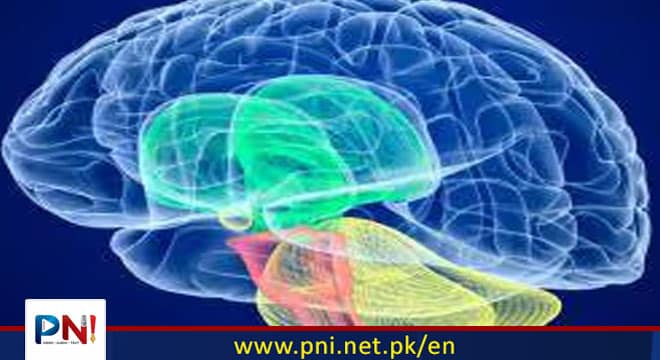ISLAMABAD, MARCH 26 (ONLINE): A new review offers guidance for people wishing to change their personalities in some way.
While our personalities remain stable across our lives, they also remain at least somewhat malleable, finds the review.
The authors found four elements that provide support for a personality change: pre-conditions, triggers, reinforcers, and integrators.
Effortlessly reconnecting with an old friend reminds us how little our personalities tend to change over time. Still, there may at times be a desire to change, and hopefully improve, who we are. There may also be wounds our personalities have suffered that we would like to undo.A new review explores in detail the factors that enable or inhibit personality change. It offers a sort of rough roadmap for making such modifications, exposing some of the obstacles that can make permanent change difficult, and how to overcome them.
Our personalities may limit our access to things we want in life. We may wish to be less lonely, less anxious, more successful, or simply happier, with attitude adjustments our current personalities seem incapable of sufficiently supporting.One of the review’s fascinating insights is that, although one’s personality tends to be largely stable over the long term, it never quite solidifies, remaining malleable across one’s lifespan.
Therefore, while we are unlikely to be able to entirely change the people we are, the review suggests that making modest changes to one’s personality is possible, and attempts to explain how a person might be able to make that happen.
The review is published in Nature Reviews PsychologyTrusted Source.
Four mechanisms
The review’s authors present a quartet of mechanisms involved in personality change, which can also inhibit it if not understood.
Psychologist Dr. Carl Nassar, who was not involved in the review, described them:
Pre-conditions — Set yourself up for change
Triggers — Set your environment up for change
Reinforcers — Set your environment up to reinforce the change
Integrators — Make the change something you do in as many places as possible.
Overall, the goal of all four together is to help a person establish new personality habits that in time may become automatic.
Dr. Nassar noted that before getting started, however, “You’ll have to first do the work of identifying the parts of your personality you’d like to change and then take the time to uncover preconditions, triggers, reinforcers, and integrators that will truly support this change. That’s no easy task.”
“If you want to proceed, my advice would be: Don’t do this alone,” said Dr. Nassar.
He explained that people who know you are likely to have helpful insights to offer about your current behavior, and can help motivate you as you enact change, serving as your triggers and reinforcers.
Dr. Emily Moore of Stanford Medicine, who was also not involved in the review, considered the four mechanisms to be “a rough outline for how to begin modifying your personality.”
“Specifically, you would want to minimize the presence of mechanisms that reinforce personality stability — e.g., consistent environment, lack of insight — and slowly introduce preconditions, triggers, reinforcers, and integrators that are in line with the personality you desire,” she said.
Fake it ’till you make it
The authors of the review suggest that this saying succinctly describes one part of one’s game plan. It can serve as an anti-anxiety tool as one begins acting in unfamiliar and perhaps initially uncomfortable new ways.
“One thing you and I and all humans are very good at is putting an end to whatever makes us anxious,” said Dr. Nassar.
“One way we can do this is telling ourselves we’re going to “fake it till we make it,’ meaning it’s okay that this doesn’t feel natural or normal quite yet (hence the ‘fake it’). But if we just hang in there, we’ll ‘make it’, arriving at that place where our anxiety has subsided and this feels more natural,” he continued.
“This approach allows you to shamelessly practice your new personality, experience reinforcement, move towards integration, and eventually embody a new version of yourself,” said Dr. Moore.
Self-criticism does not help
Dr. Nassar noted that the process is not entirely different from mindfulness practice. In mindfulness, people are told “that if they bring their attention to what they are feeling and thinking, they won’t act these out unconsciously, but rather they’ll be able to consciously attend to them.”
“The same is true of personality change,” he said. “The more we focus on where we want to go — and it’s important to do that rather than critique ourselves when we fall short— the more likely we are to create the desired change.”
“Think of it as an infant learning to walk. When infants fall down as they attempt to walk, they don’t say to themselves, ‘what’s wrong with me that I fell.’ They just get around to standing back up and trying again.”
— Dr. Carl Nassar
Self-motivated change
“From my perspective,” said Dr. Moore, “this means that it is only worth attempting to make personality changes that are autonomously motivated, and not due to external pressures.”
“If you feel like you should be more extraverted because it is socially valued and not because it feels personally meaningful to you, it is unlikely that you will be able to maintain that conscious will throughout the process of change,” she said.
Dr. Moore also cited a colleague’s research from McGill UniversityTrusted Source, who has found, said Dr. Moore, “autonomous motivation is associated with progress on personality change goals and that this progress is associated with psychological well-being over time.”
Hanging on to positive spontaneous changes
Personalities may suddenly take on a new positive aspect in response to a life event such as an inspiring experience, a sudden shift in perspective after the birth of a child, for example, or surviving a difficult personal challenge. Often, unfortunately, such seemingly life-altering changes fade with time, said Dr. Nassar because nothing is there to support them.
To hang on to them, Dr. Moore recommended first “getting curious about what led to the change, and integrating the positive changes into our self-identity.”
“Beyond this, we would want to minimize mechanisms of personality stability that re-emerge after the life event.” She suggested one “identify which preconditions, triggers, reinforcers, and integrators we want to intentionally introduce to support maintenance of the personality change that naturally occurred in response to the life event.”
For Dr. Nassar, “The key here is reinforcers, setting your environment up to continue to support the change that happened after a life event. Do your best to fill your life with things that will encourage change, perhaps your spouse encouraging you and holding you accountable. That’ll go a long way.”








